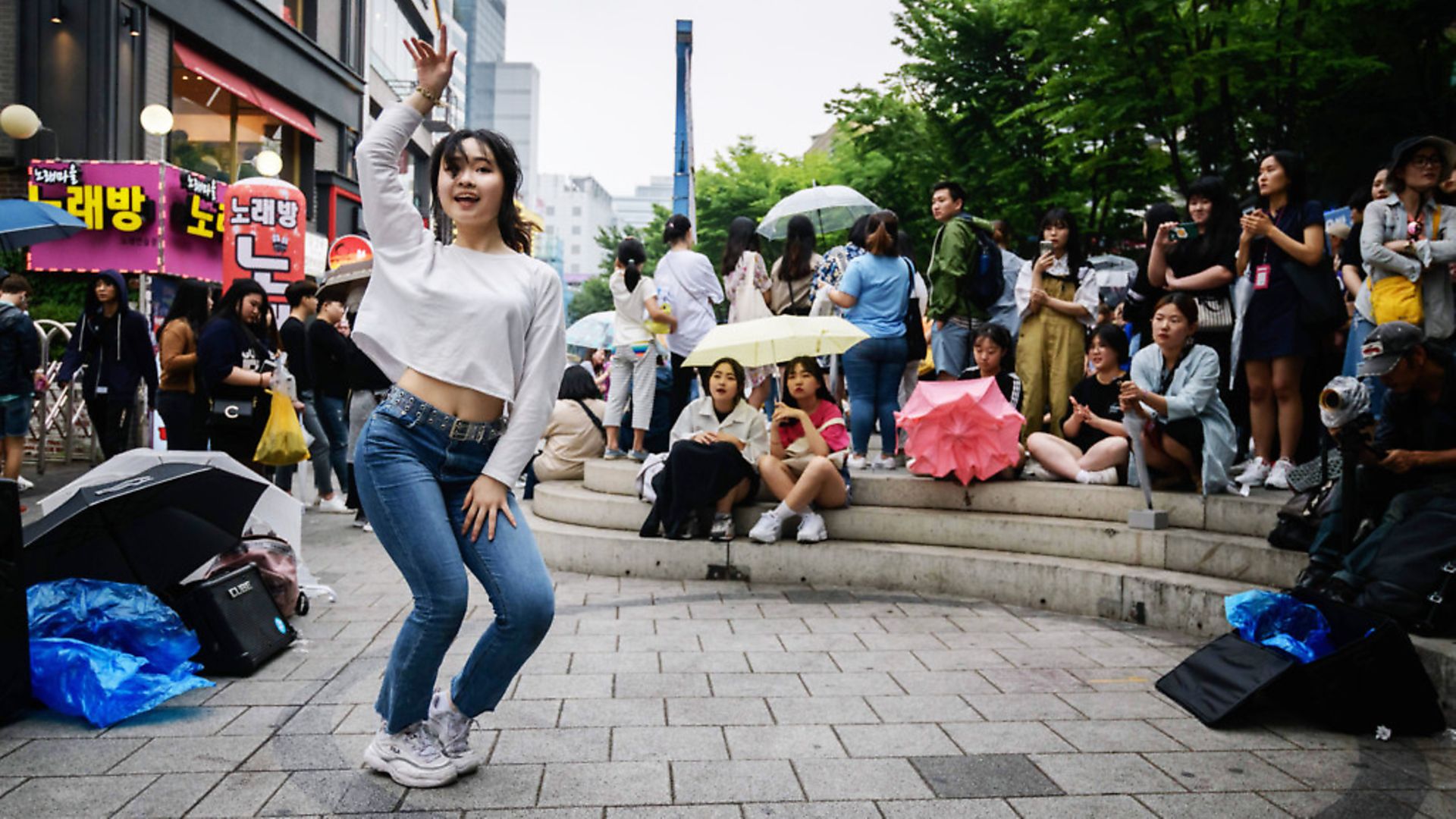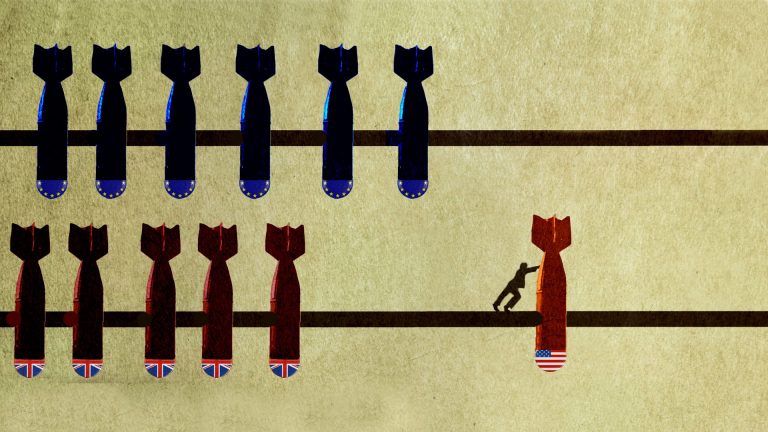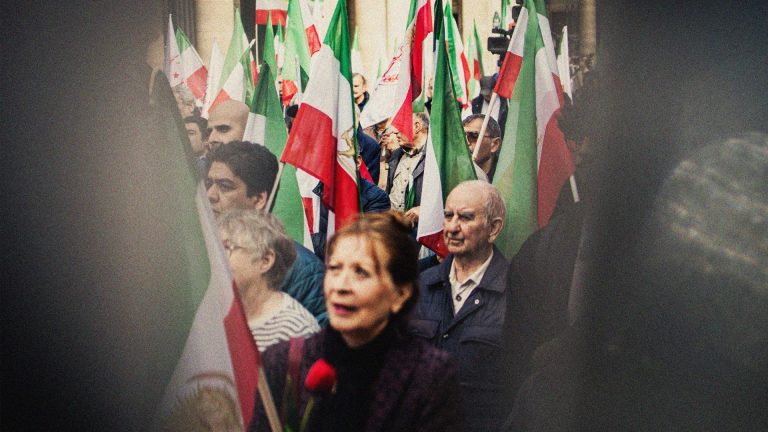
The South Korean capital is known for its slick and boundlessly exuberant pop. Yet the ebullience belies a complex and dark history. SOPHIA DEBOICK reports.
Seoul is a pop powerhouse. In just a few years, its K-pop industry has gone from a localised East Asian craze to a global force, with comic rapper Psy, of Gangnam Style fame, and seven-piece boy band BTS having major cut-through to the West.
In 2012 Gangnam Style became the first YouTube video to hit a billion views and the single went to No.1 around the world, going multiple times platinum in the process. BTS have since conquered the globe, scooping three US No.1 albums and selling out stadiums there and in the UK.
But while the ‘Korean Wave’ (or hallyu) – a term now synonymous with K-pop – has often been framed as the export of a uniquely South Korean pop culture to the rest of the world, K-pop is in fact indelibly marked by Western influences. Indeed, the whole modern history of Korean music has been one of cross-pollination and hybridisation, bound up with the country’s fortunes in the turbulent 20th century, when a hyper-modern democracy, with Seoul as its beating heart, rose from the ashes of colonialism and war.
For the first half of the 20th century, Korea was a colony of Imperial Japan, and the effects of ‘Japanisation’ on its music have been the focus of controversy ever since. The popular song style of t’urot’u, or trot, crystallised in the 1920s, marking a turn away from traditional music, and making use of both the Japanese pentatonic scale and musical idioms from the West.
Yet it retained a distinctive nasal vibrato derived from traditional Korean folk music and its mournful ballads could be read as laments for a dispossessed nation. Lee Nan-young’s Tears of Mokpo (1935), for example, referred to the southern port city of her birth and mourned for the Korean men shipped to Japan under the imperial regime.
By the time that song was recorded, commercial production of Korean-language records had shifted from Tokyo to Seoul, with Victor, Columbia and Okeh all opening offices there, and Korea’s music industry had truly been born.
Seoul’s status as a musical centre would be turbo-charged after the grip of Imperial Japan was broken by the Second World War and following the splitting of Korea in two in 1948 and the complete devastation of the war of 1950-53.
When the Eighth United States Army was moved from Japan to Korea in 1954, installing itself at Yongsan Garrison in central Seoul, it brought musical revolution. Its troop entertainments hosted both Western musicians and local trot singers, but the base was also the headquarters of the American Forces Korea Network from 1957, broadcasting American music to the country at the height of rock ‘n’ roll, unleashing its potent influence on the population, with incalculable later effects.
Embodying both the hybrid nature of South Korean pop and the human cost of the country’s travails, the Kim Sisters began their careers at Yongsan Garrison. Comprised of the two daughters and a niece of Lee Nan-young, the group was a means of survival for the family after the killing of Lee’s composer husband, Kim Hai-Song, by North Korean forces, and the aftermath of war left them destitute in a devastated Seoul. The teenage trio learned American hits phonetically and performed them for the homesick Yanks, but when they went the US in 1958 for a Vegas residency, it was their flawless harmonies and skill as multi-instrumentalists, the result of their Korean musical education, that bowled the crowd over.
They appeared on The Ed Sullivan Show 22 times between 1960 and 1967, looking every inch the perfect coiffed and mini-skirted girl group, and their cover of The Coasters’ Charlie Brown became a Billboard Hot 100 hit in 1962.
In South Korea itself, however, years of dictatorship and political oppression would bring with it suppression of musical expression. Seoul-born Lee Mi-ja, a legend of trot, saw her massive hit, Camellia Lady (1964) banned as ‘too Japanese’ under General Park Chung-hee’s nationalistic military dictatorship, established after the 1961 coup, and this was a fate shared by many trot songs, seen by some as quintessentially Korean, and by others as a colonial hangover.
But that year also saw other music stars who embraced foreign influence emerge from the city. Yoon Bok-hee, a child performer who would go on to a career in musicals, went to swinging London in 1964 and found success as part of the group the Korean Kittens, while Shin Joong-Hyun, the godfather of Korean rock, released his first album with his Beatles-influenced band, Add4.
Shin had made his performing debut at Yongsan Garrison as a teenager in 1957 and would be profoundly influenced by forces radio, going on to explore soul, funk and psychedelia, including his epically funky Beautiful Rivers and Mountains (1972), his defiant response to a request for a propaganda song from General Park.
Shin was later imprisoned and tortured and his music banned, but following Park’s 1979 assassination he experienced a renaissance and became one of the most influential figures in South Korean music, including opening a music club in Seoul’s ex-pat district of Itaewon and later opening another, Woodstock, on the southeast periphery of the city.
Woodstock played a part in ushering in the next age of South Korean music, since it was there that Shin’s son, the guitarist Shin Daechul, met Seo Taiji in 1986, the two going on to form Sinawe, one of the first Korean metal bands.
They were emerging at the right moment. Following the first free elections of 1988 and Seoul’s hosting of Olympics, 1993 saw pro-democracy activist Kim Young-Sam become the first freely-elected civilian president of South Korea.
Western music became more widely available and a homegrown punk scene known as Chosun Punk sprang up around the Drug club in the arty Hongdae district, with bands like Crying Nut and No Brain emerging.
But while in the 2000s this alternative music trend continued as hardcore band The Geeks, The Rocktigers (wittily rebranding rockabilly as ‘kimchibilly’), and pop-punk trio …Whatever That Means emerged from Seoul, it was K-pop that would become one of the city’s, and the country’s, greatest exports.
Sinawe’s Seo Taiji would go on to an unlikely career in Seo Taiji and Boys, one of the first K-pop bands, who emerged on a television talent show in 1992 with their song Nan Arayo (I Know).
From those beginnings has grown a mega-industry. The ‘big three’ K-pop companies – SM Entertainment in Gangnam, JYP Entertainment further east in Gangdong-gu, and YG (founded by ex-Seo Taiji and Boys member, Yang Hyun-suk), north of the Han river – are known for their ‘idol farms’, where prospective pop stars are meticulously groomed for fame, an expensive process which makes international success (and, therefore, English lessons) essential.
From the SM-managed R&B boy band SHINee to YG’s hallyu girl band par excellence, BLACKPINK, these doll-like stars have killer pop tunes that take the best from Western pop and beat it at its own game. But the pressure placed on these stars and the 2017 suicide of SHINee member, Jonghyun, has cast a shadow over this perky pop scene, and there are signs of K-pop becoming less unnervingly homogenous.
Psy has little in common with such manufactured groups, rejecting a slick image in favour of overt absurdity, and demonstrating it sells, and even BTS, the kings of the ‘idol’ groups, have shown that a less regimented approach can pay dividends.
Managed by the relatively small Big Hit Entertainment, they have been allowed a degree of freedom, for example in interacting with fans online, which seems to have aided their success.
Diversity is certainly the watchword of the Seoul music scene on the ground today.
The city is home to a slew of jazz and indie clubs, as well some legendary record shops. South of the Han, there’s rm360, owned by DJ Soulscape, who pays homage to the American-influenced Korean jazz, soul and funk of the 1960s and 1970s through both this haven for crate-diggers and his own music.
In Hongdae, Gimbab Records can be found, its vinyl hand-curated by Young Hyuk Kim, formerly of Sony BMG. And not far from the Yongsan Garrison, there is the Music Library, an initiative by Hyundai, which houses more than 10,000 vinyl records, including extreme rarities, as well as the full Rolling Stone back catalogue.
While tensions with North Korea, political scandal and economic strife continue to shape South Korean life and culture, this is a place that has always adapted to survive, embracing influences from all comers as it does so, and resulting in an approach to music whose eclecticism is unrivalled.









